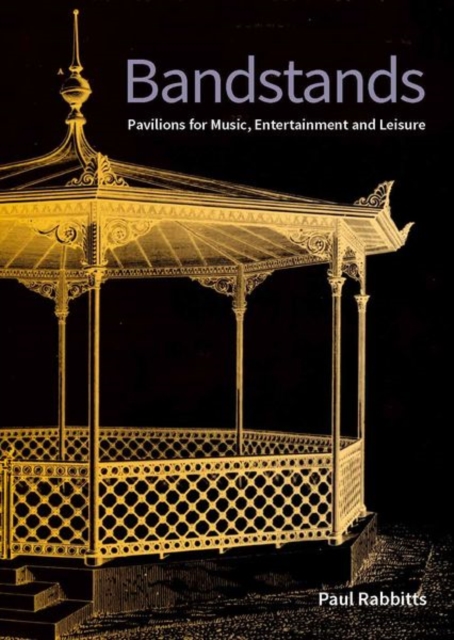
Bandstands : Pavilions for music, entertainment and leisure Paperback / softback
by Paul Rabbitts
Paperback / softback
Description
In 1833, the Select Committee for Public Walks was introduced so that ‘the provision of parks would lead to a better use of Sundays and the replacement of the debasing pleasures.’ Music was seen as an important moral influence and ‘musical cultivation … the safest and surest method of popular culture’, and it was the eventual introduction of the bandstand which became a significant aspect of the reforming potential of public parks.
However, the move from the bull baiting of ‘Merrie England’ to the ordered recreation provided by bandstands has never been fully comprehended.
Likewise, the extent of changes in leisure and public entertainment and the impact of music at seaside resorts often revolved around the use of seaside bandstands, with the subsequent growth of coastal resorts.
Music in public spaces, and the history and heritage of the bandstand has largely been ignored.
Yet in their heyday, there were over 1,500 bandstands in the country, in public parks, on piers and seaside promenades attracting the likes of crowds of over 10,000 in the Arboretum in Lincoln, to regular weekday and weekend concerts in most of London’s parks up until the beginning of the Second World War.
Little is really known about them, from their evolution as ‘orchestras’ in the early Pleasure Gardens, the music played within them, to their intricate and ornate ironwork or art deco designs and the impact of the great foundries, their worldwide influence, to the great decline post Second World War and subsequent revival in the late 1990s.
This book tells the story of these pavilions made for music, and their history, decline and revival.
Information
-
Item not Available
- Format:Paperback / softback
- Pages:248 pages, 244 Illustrations, color
- Publisher:Historic England
- Publication Date:15/05/2018
- Category:
- ISBN:9781848023727
Information
-
Item not Available
- Format:Paperback / softback
- Pages:248 pages, 244 Illustrations, color
- Publisher:Historic England
- Publication Date:15/05/2018
- Category:
- ISBN:9781848023727






